The 4 Worst Exercises for People Over 40 (And What to Do Instead)
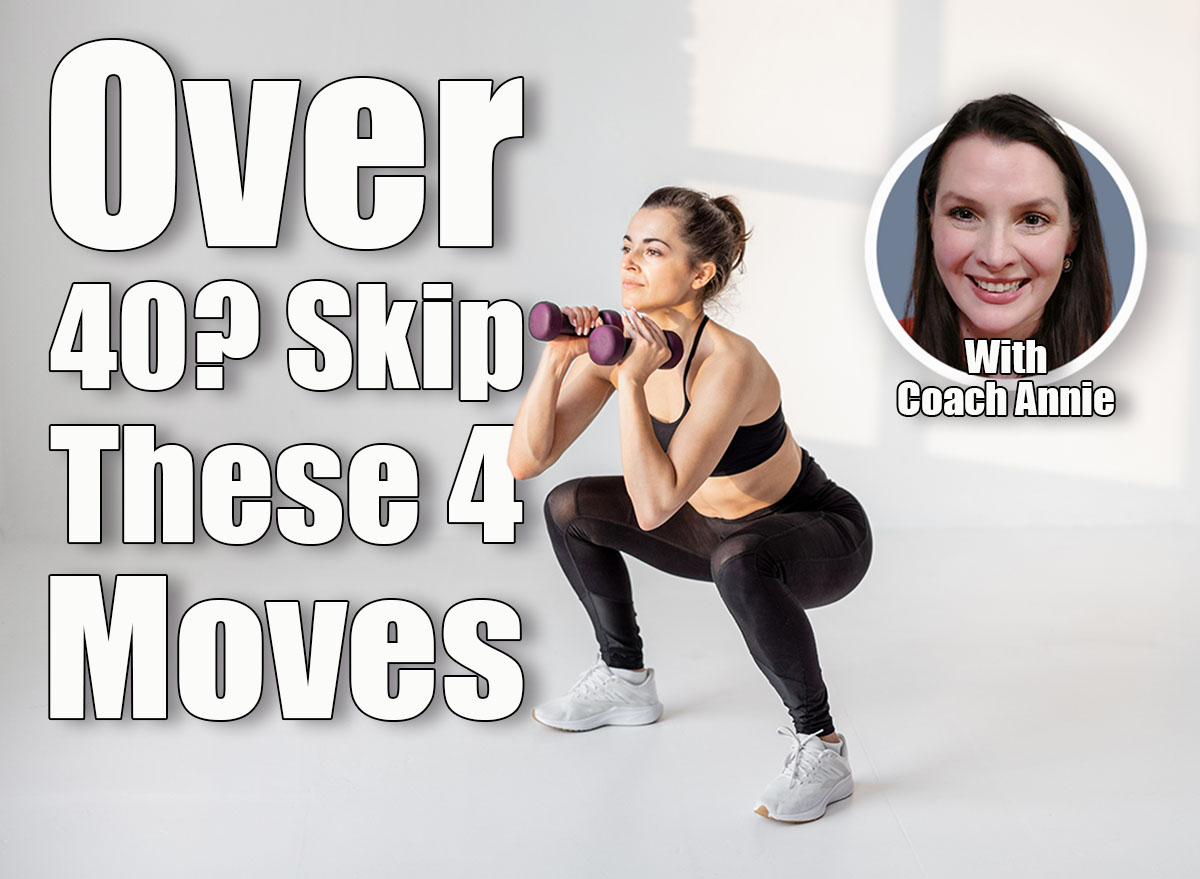
Look, I get it: you want to stay in shape, keep up with the younger crowd at the gym, and prove that 40 (or 50, or 60) is just a number. But here’s the thing: your body has changed, whether you want to admit it or not. Those trendy exercises you see all over Instagram? Some of them are actually setting you up for injury. The good news is, you don’t have to give up on challenging workouts—you just need to work smarter, not harder. Let me show you which popular moves to skip and what to do instead so you can build real strength without the setbacks.
The Biggest Mistakes You’re Making

As a fitness professional, the two biggest mistakes I see people over 40 making are forcing movement or avoiding movement altogether.
We are likely to develop compensatory movement patterns or suffer injuries as we age. Pushing through pain and forcing movement should be avoided. You also want to make sure that you rehab all injuries properly. You’ll want to consult with a medical professional, and substantial injuries may require physical therapy. Even after you finish therapy, you may need to continue to work to improve your strength.
Avoiding movement is something else I see with people who have suffered injuries or are experiencing joint pain. This creates a greater risk of muscle atrophy and further injuries with age. Supportive exercises under the direction of a physical therapist or corrective exercise specialist can help alleviate pain and reduce the risk of further injury.
What Happens to Your Body After 40

Muscle mass begins to decline for both men and women in their thirties. Women also experience bone loss at a rapid rate around the time of the menopause transition. Both happenings make exercise more important to preserve muscle and bone mass. They also heighten the risk of injury if exercises are completed in an unsafe manner.
The 4 Worst Exercises for People Over 40
Box Jump
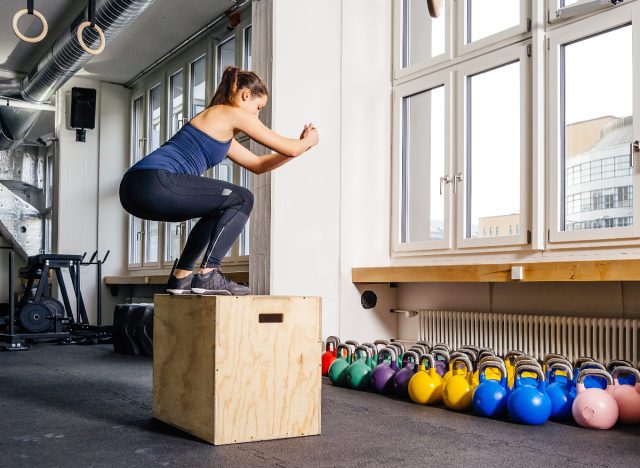
A box jump is a high-impact plyometric activity where you enter a deep squat and jump onto boxes of varying heights. One risk of attempting this move is not getting the feet all the way onto the box, resulting in a slip and fall. Another would be pain from the impact of doing this motion repetitively. Injury could occur in any of the lower extremities.
Squatting with the Weighted Bar Behind Your Head

While extremely popular, this position distorts the alignment of the neck and places extra pressure on the shoulders. This can result in neck and shoulder injuries. Knee injuries could also result, particularly if the weight is extremely heavy or the squat is performed incorrectly.
Kettlebell Swings
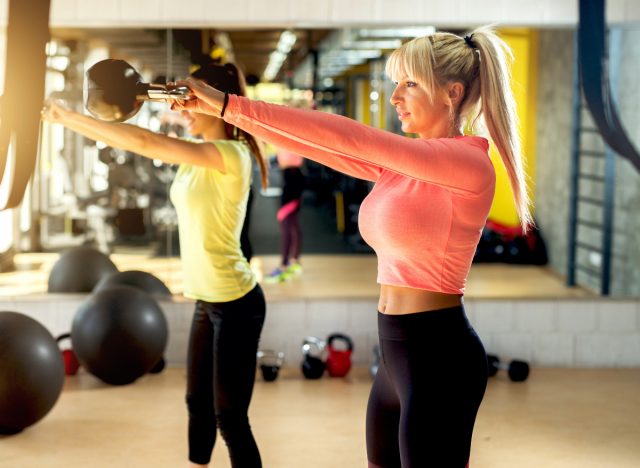
Another popular, but risky move. Kettle bells are great for toning muscles when used correctly because they do require you to use stabilizing muscles to control the weight. Unfortunately, when you squat down and raise the kettlebell out in front of you to activate the legs, core, and arms, it can be easy to rely on momentum instead of strength. This, coupled with the instability of the kettlebell, can lead to back injuries without proper control.
Medicine Ball Slams
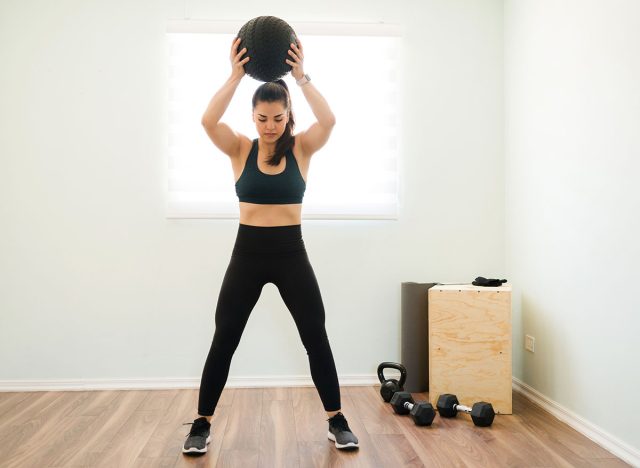
If done correctly, this is an explosive power move originating from the lower body with upper body benefits. However, medicine ball slams can result in shoulder injuries if the range of motion does not allow for the arms to extend properly overhead or if the ball is too heavy. This exercise can also result in back injury if the back is arched when launching the ball.
4 Safe and Effective Alternatives
All these exercises can be performed without weights and still be effective. The focus should be on recruiting the correct muscles and maintaining proper form. Weights can be added or increased as strength is gained.
Squat Jump
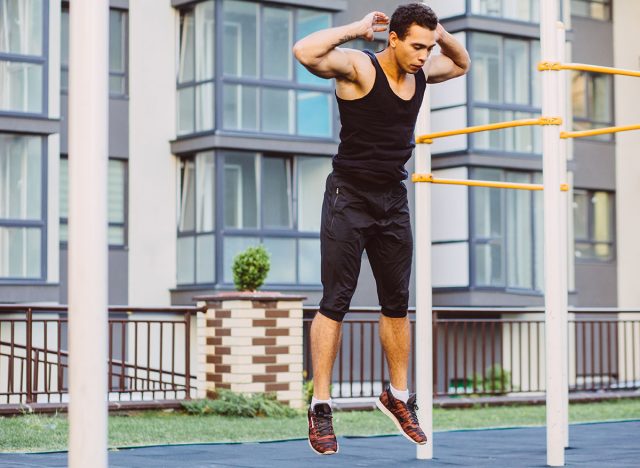
This is a safer way to experience the benefits of plyometric training, such as increased agility and coordination.
How to do it correctly:
- Engage the core
- Send the tailbone back as if you were going to sit in a chair
- Using your quads, push off from the ground and straighten the leg
- Bring the pelvis directly underneath the torso after you leave the floor
- Control your landing by placing weight gently underneath the toes, then the ball of the foot, and finally the heel
- Soften into a gentle knee bend
Squats with Dumbbells Over Shoulders

Squats are great for engaging the lower body, particularly the quads and glutes. By adding weight, you are increasing the difficulty of the movement and involving the upper body.
How to do it correctly:
- Engage the core as you raise the dumbbells just over your shoulders
- Keep the triceps parallel to floor and the end of the weights pointing forward
- Send the tailbone backwards as you bend the knees and lower down
- Be careful not to drop the seat below your knees
- Squeeze your glutes as you return to the starting position
Romanian Deadlift
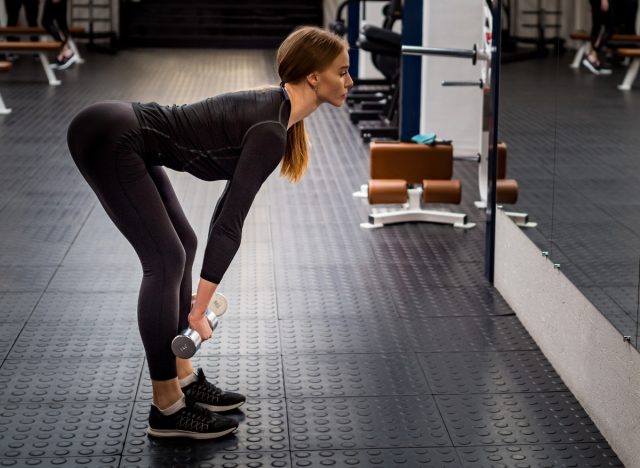
This is a great exercise with practical benefits for daily life. It is also a way for us to tone and train the muscles we need to safely pick up objects from the floor.
How to do it correctly:
- Stand with your feet shoulder-width apart
- Engage the core and maintain a flat back as you lower the upper body forward, weights in hand
- Squeeze the lats as you raise the weights towards your chest with the knuckles facing away from the body
- Release and return to the starting position
Wood-Chop
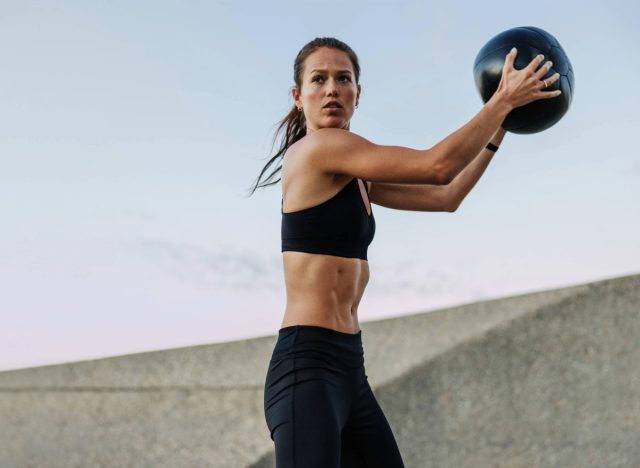
This exercise targets the obliques and can be performed in a controlled manner. Ensure that you are engaging your core and not allowing the spine to round or the seat to stick out. This will ensure that you protect your back and are able to safely practice rotation through the spine.
How to do it correctly:
- Turn one weight so that you are holding one end of the weight in each hand
- Raise the weight overhead on the diagonal if your range of motion allows
- Bring the weight down on the diagonal towards the other hip
- Raise the opposite knee into a march position
What Results Can You Expect
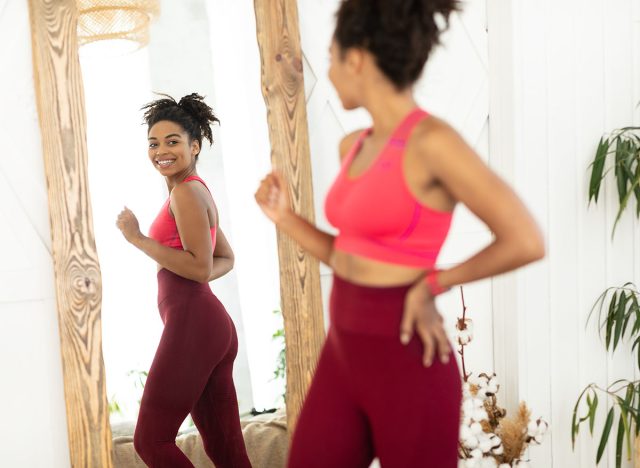
I would suggest working out three to four times a week. If you need a complete rest on a rest day, take it. Generally, however, I recommend moving every day. This could be going for a walk or a breathwork session with mindful seated movements. Just do something to get the body moving!
Popping sounds, especially when accompanied by pain, mean that you should stop exercising immediately. Any sort of sharp or stabbing pain should also be avoided, and the exercise stopped.
You can expect improved range of motion, flexibility, and strength when you perform safe exercises regularly. With a consistent routine over 4-6 weeks, these safer alternatives will deliver real, measurable improvements to your fitness.